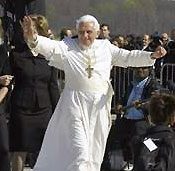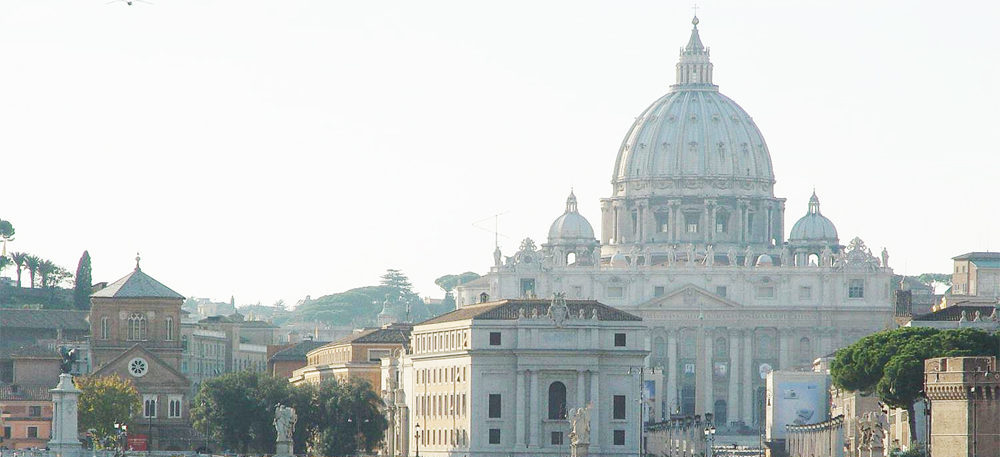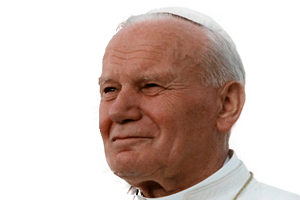
“In the course of the Catecheses that I have chosen to dedicate to the Fathers of the Church and to great theologians and women of the Middle Ages I have also had the opportunity to reflect on certain Saints proclaimed Doctors of the Church on account of the eminence of their teaching.
Today I would like to begin a brief series of meetings to complete the presentation on the Doctors of the Church and I am beginning with a Saint who is one of the peaks of Christian spirituality of all time — St Teresa of Avila [also known as St Teresa of Jesus].
St Teresa, whose name was Teresa de Cepeda y Ahumada, was born in Avila, Spain, in 1515. …”
 Pope Benedict XVI, in a General Audience on Feb. 2, 2011, reflected on the life and thinking of Saint Teresa of Avila. Click here for the full text of his remarks: vatican.va/content/benedict-xvi/en/audiences/2011/documents/hf_ben-xvi_aud_20110202.html
Pope Benedict XVI, in a General Audience on Feb. 2, 2011, reflected on the life and thinking of Saint Teresa of Avila. Click here for the full text of his remarks: vatican.va/content/benedict-xvi/en/audiences/2011/documents/hf_ben-xvi_aud_20110202.html
A full Vatican news release from that date follows:
TERESA OF AVILA: CONTEMPLATIVE AND INDUSTRIOUS
VATICAN CITY, 2 FEB 2011 (VIS) – During his general audience, held this morning in the Paul VI Hall, the Pope spoke about St. Teresa of Avila, who lived from 1515 to 1582.
Teresa de Ahumada was born in the Spanish city of Avila, said Benedict XVI. Although as an adolescent she read works of profane literature which led her towards a life in the world, she later turned to spiritual works which “taught her meditation and prayer. At the age of twenty she entered the Carmelite convent of the Incarnation, also in Avila”.
St. Teresa saw her struggle against her own physical ailments as “a struggle against her weakness and resistance before the call of God. … In Lent 1554, at the age of thirty-nine, Teresa reached the pinnacle of her fight against her own debilities”.
“In parallel with the maturation of her interior life, the saint also began to give concrete form to her idea of reforming the Carmelite order. In 1562, with the support of Bishop Alvaro de Mendoza of Avila, she founded the first reformed Carmelite convent. … Over the following years she continued to found new Carmelite convents, reaching a total of seventeen. Her meeting with St. John of the Cross proved fundamental and with him, in 1568, she founded the first convent of Discalced Carmelites, at Duruelo near Avila”. Teresa died in 1582. She was beatified by Paul V in 1614 and canonised in 1622 by Gregory XV. In 1970 Servant of God Paul VI declared her a Doctor of the Church.
The Holy Father noted how “Teresa of Avila had no academic education, however she always gave great weight to the teaching of theologians, men of letters and spiritual masters”. Her major works include an autobiography in which she presents her soul to St. John of Avila, and the “Way of Perfection” intended as a spiritual guide for her own nuns. However, “St. Teresa’s most famous mystical work is the ‘Interior Castle'”, said the Pope, in which “she codifies the possible development of Christian life towards perfection. … To her activity as founder of the Reformed Carmelites, Teresa dedicated another work, the ‘Book of Foundations'”.
Referring then to the spirituality of Teresa, the Holy Father made particular mention of her interest in “the evangelical virtues as the foundation of all Christian and human life”. He also noted how she laid great emphasis on “profound harmony with the great biblical figures” and on “listening to the Word of God. … The saint also highlights the importance of prayer”, he said, “she teaches readers of her works to pray, and she herself prays with them”.
“Another question very dear to this saint was the centrality of Christ’s humanity. … This lay at the basis of the importance she attributed to meditation on the Passion, and to the Eucharist as the presence of Christ in the Church, for the life of all believers and as the heart of the liturgy. St. Teresa’s love for the Church was unconditional”, said the Pope, identifying another essential part of her doctrine in “perfection as the aspiration and final goal of all Christian life”.
The Holy Father concluded by saying that “St. Teresa of Avila is an authentic teacher of Christian life for the faithful in all times. In our society, often lacking in spiritual values, St. Teresa teaches us to be tireless witnesses of God, of His presence and His work. … May the example of this profoundly contemplative and industrious saint, encourage us to dedicate adequate time to daily prayer, to openness to God in order to discover His friendship and so to discover true life. … Time spent in prayer is not lost; it is a time in which we open the way to life, learning to love God and His Church ardently, and to show real charity towards our neighbours”.
AG/ VIS 20110202 (650)
Published by VIS – Holy See Press Office – Wednesday, February 02, 2011
News release also appeared at visnews-en.blogspot.com/2011/02/teresa-of-avila-contemplative-and.html bearing the following notice:
Copyright © VIS – Vatican Information Service
In accordance with international regulations on Intellectual Property and Author’s Rights, VIS authorises reproduction of news items issued by the Vatican Information Service, partially or in their entirety, on condition that the source (VIS – Vatican Information Service) is quoted.

[featured images are file photos]




 Pope Benedict XVI, in a General Audience on Feb. 2, 2011, reflected on the life and thinking of Saint Teresa of Avila.
Pope Benedict XVI, in a General Audience on Feb. 2, 2011, reflected on the life and thinking of Saint Teresa of Avila. 


